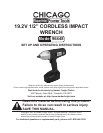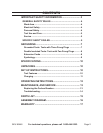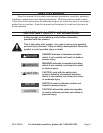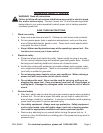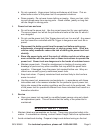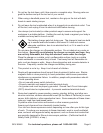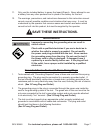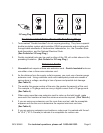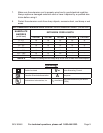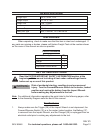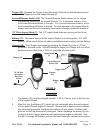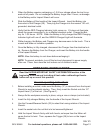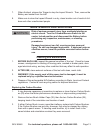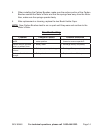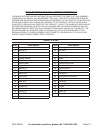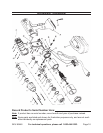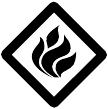
Page 6SKU 96448 For technical questions, please call 1-800-444-3353.
Do not lay the tool down until it has come to a complete stop. Moving parts can 3.
grab the surface and pull the tool out of your control.
When using a handheld power tool, maintain a rm grip on the tool with both 4.
hands to resist starting torque.
Do not leave the tool unattended when it is plugged into an electrical outlet. Turn 5.
off the tool, and unplug it from its electrical outlet before leaving.
Use clamps (not included) or other practical ways to secure and support the 6.
workpiece to a stable platform. Holding the work by hand or against your body is
unstable and may lead to loss of control.
7. The battery charger gets hot during use. The charger’s heat can build
up to unsafe levels and create a re hazard if it does not receive
adequate ventilation, due to an electrical fault, or if it is used in a hot
environment.
Do not place the charger on a ammable surface. Do not obstruct any vents on
the charger. Especially avoid placing the charger on carpets and rugs; they
are not only ammable, but they also obstruct vents under the charger.
Place the charger on a stable, solid, nonammable surface (such as a stable
metal workbench or concrete oor) at least 1 foot away from all ammable ob-
jects, such as drapes or walls. Keep a re extinguisher and a smoke detector in
the area. Frequently monitor the charger and battery during use.
This product is not a toy. Keep it out of reach of children.8.
People with pacemakers should consult their physician(s) before use. Electro-9.
magnetic elds in close proximity to heart pacemaker could cause pacemaker
interference or pacemaker failure. In addition, people with pacemakers should:
• Avoid operating alone.
• Do not use with power switch locked on.
• Properly maintain and inspect to avoid electrical shock.
• Any power cord must be properly grounded. Ground Fault Circuit Interrupter
(GFCI) should also be implemented – it prevents sustained electrical shock.
Some dust created by power sanding, sawing, grinding, drilling, and other con-10.
struction activities, contains chemicals known [to the State of California] to cause
cancer, birth defects or other reproductive harm. Some examples of these chem-
icals are: Lead from lead-based paints
Crystalline silica from bricks and cement or other masonry products
Arsenic and chromium from chemically treated lumber
Your risk from these exposures varies, depending on how often you do this type
of work. To reduce your exposure to these chemicals: work in a well ventilated
area, and work with approved safety equipment, such as those dust masks that
are specially designed to lter out microscopic particles. (California Health &
Safety Code § 25249.5, et seq.)



